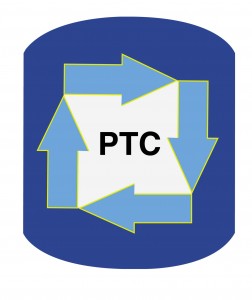A solid-liquid PTC isocyanate reaction was successfully performed on a 1 kg scale using a water-sensitive silane.
As shown in the reaction diagram, 1.04 equivalents of potassium isocyanate were reacted with 1-chloromethyl-methyldimethoxysilane and methanol in DMF as the solvent. The phase-transfer catalyst was tetrabutylammonium bromide used at 1.3 mole% catalyst loading. Potassium iodide was used as a co-catalyst at 0.5 mole% to form in-situ the more reactive intermediate 1-iodomethyl-methyldimethoxysilane.
As we teach in our 2-day course “Industrial Phase-Transfer Catalysis,” since the quaternary ammonium phase-transfer catalyst transfers and activates both the isocyanate nucleophile and the iodide nucleophile, it is very important to use less than iodide than tetrabutylammonium in order to avoid catalyst poisoning. The potential for catalyst poisoning is high due the very high affinity of tetrabutylammonium to iodide relative to the affinity of tetrabutylammonium to isocyanate. We believe that is why the inventors used only 0.5 mole% KI in the presence of 1.3 mole% TBAB.
Methanol is used in this process as a reactant, not a solvent. Methanol reacts with the isocyanate intermediate to form the carbamate.
The conversion is more than 99.9% and the overall yield is 86% after removing the DMF solvent, excess reactant and byproduct by distillation (that also contained 5% of the product), then dissolution in toluene to facilitate flow during filtration of the solid salts, then additional extractions and final removal of toluene and other somewhat volatile compounds by distillation.
The low excess of only 4 mole% of isocyanate yet again demonstrates the high efficiency of PTC that reduces cost and improves environmental performance. The conversion was nearly quantitative and the yield loss may have been due to extensive processing during workup.
The purity after workup was 92.8%. When the reaction was repeated without PTC (Comparative Example V1a), the purity was lower at 85.7%.
We wonder if DMF could have been replaced by a more convenient lower boiling solvent (maybe xylene, b.p. 138 deg C) since PTC is able to transfer and activate isocyanate and iodide in solid-liquid PTC systems using a wide variety of solvents. The temperature of the reaction was maintained at 123 deg to 127 deg C for most of the reaction. Then again, the reaction temperature was determined by the azeotrope reflux temperature of DMF with methanol, so maybe there was little flexibility in choosing the solvent.
If you want to benefit from 49 years of highly specialized expertise of Dr. Marc Halpern in industrial phase-transfer catalysis, now contact Dr. Halpern to explore PTC Process Consulting or Industrial PTC training at your company.


